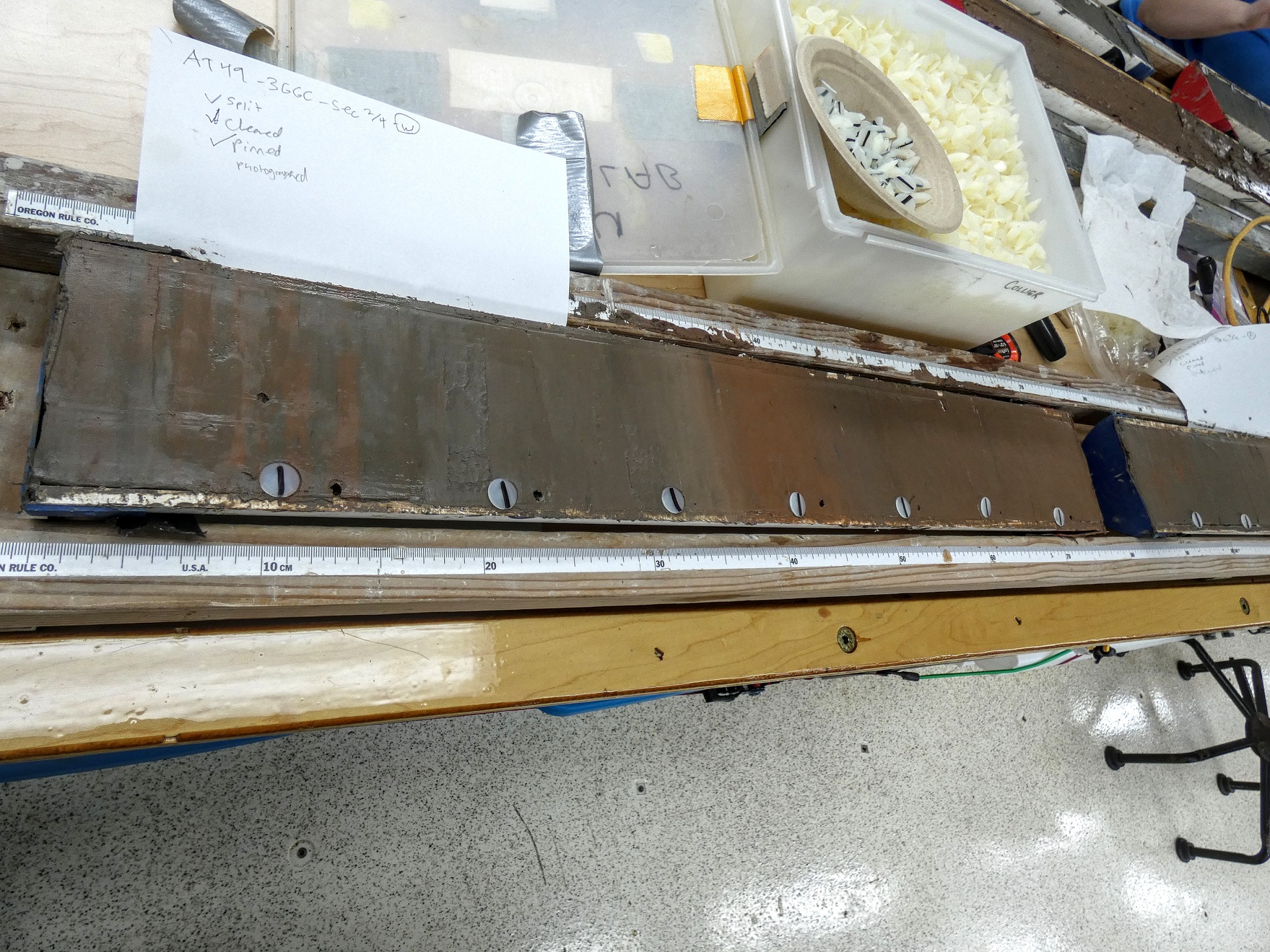We finally reaching our first coring sight off the coast of Nova Scotia at around 4:30 am on Sunday morning!
Transects for coring had been previously established here using geologic maps of the seafloor (NOAA). Exact locations for coring were established on-site via sonar, looking specifically for soft, layered mud (see previous post).
In this post, I’ll cover the two main methods of sediment coring we employed today – gravity coring and multicoring.
Gravity Coring
Gravity coring is one of the most common types of sediment coring used by geologists. The corer consists of a tube (core barrel), a PVC liner, and a heavy weight (3500-6000 lb) intended to drive the corer into seafloor sediment.
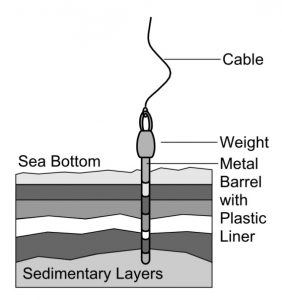
We carefully labeled different sections of the liner prior to loading it, taking special care to note the intended top and bottom ends. The liner was inserted into the core barrel, and a core catcher assembly was installed on the bottom to allow mud to enter but not exit. At the end of the barrel, a metal core cutter was mounted to aid in penetrating the seafloor sediment. The core barrel was loaded into the hub housing the weight, and the entire apparatus was lowered into the water using a crane. It took over an hour for the corer to reach the seafloor (at around 2100 meters deep). It was then retrieved and secured aboard the ship. The liner was recovered from the core barrel, sectioned, and capped for analysis. Here’s a time-lapse of this 2+ hour process:
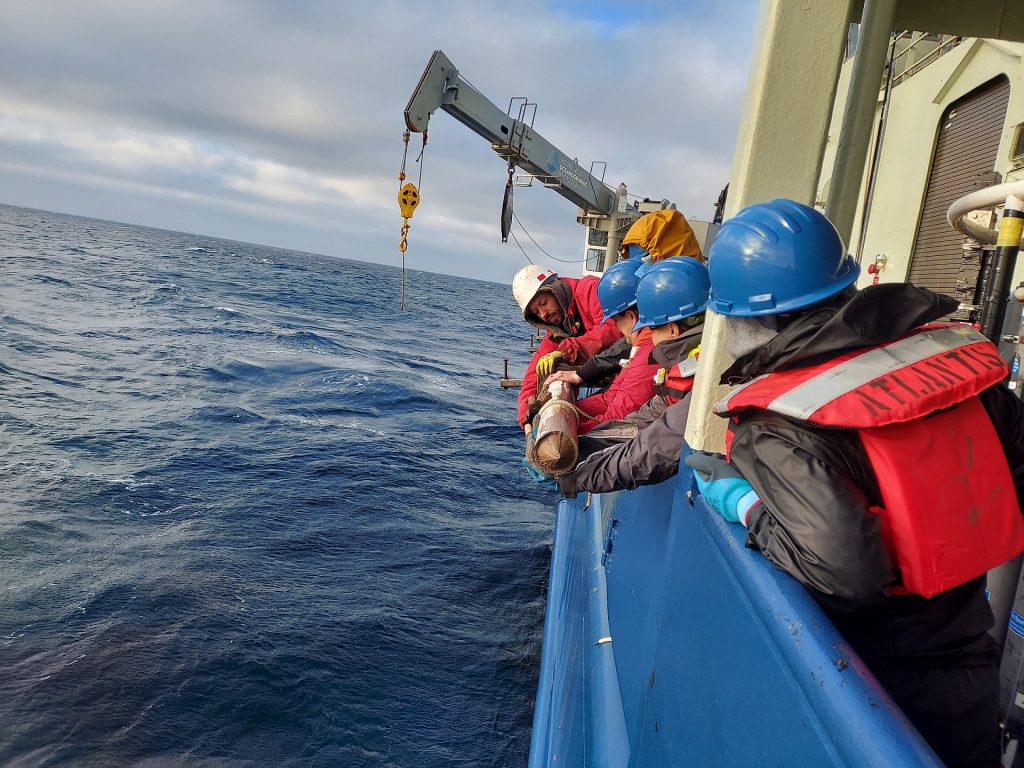
Gravity Core Analysis
Each section of the gravity core was first processed using a multi-sensor core logger (MSCL). The MSCL provides a “first pass” at the physical properties and stratigraphy of the core to guide us in later sampling decisions. The MSCL contains cesium and p-wave detectors, which provide information about the density of each sediment layer in the core. The logger also contains a resistivity detector, which provides information about conductivity, as well as a magnetic susceptibility detector. Sediment that originated in terrestrial areas tends to be more magnetic and have a higher resistance, due to its metallic content.
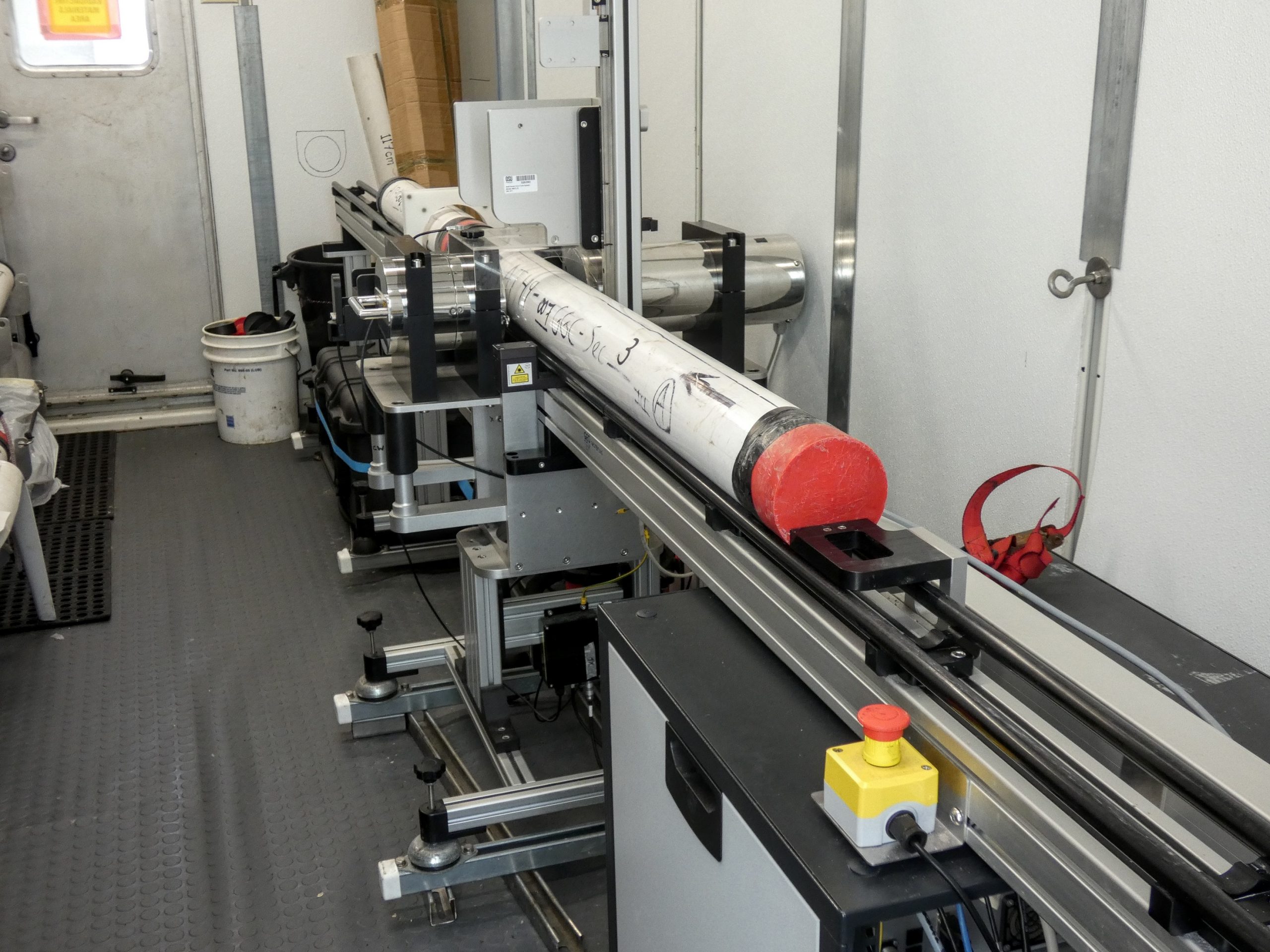
Following MSCL analysis, the core sections are bisected lengthwise with a saw and split open. One of the halves is used for subsequent analysis, the other is stored as an archival backup. Here’s a video of this entire process:
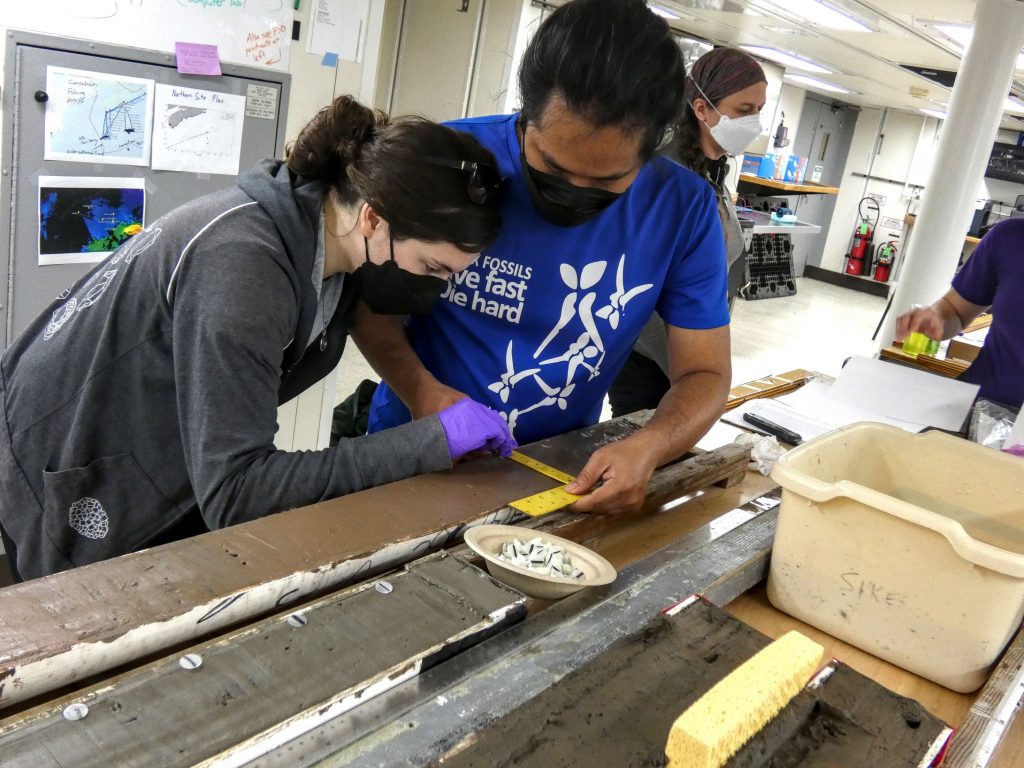
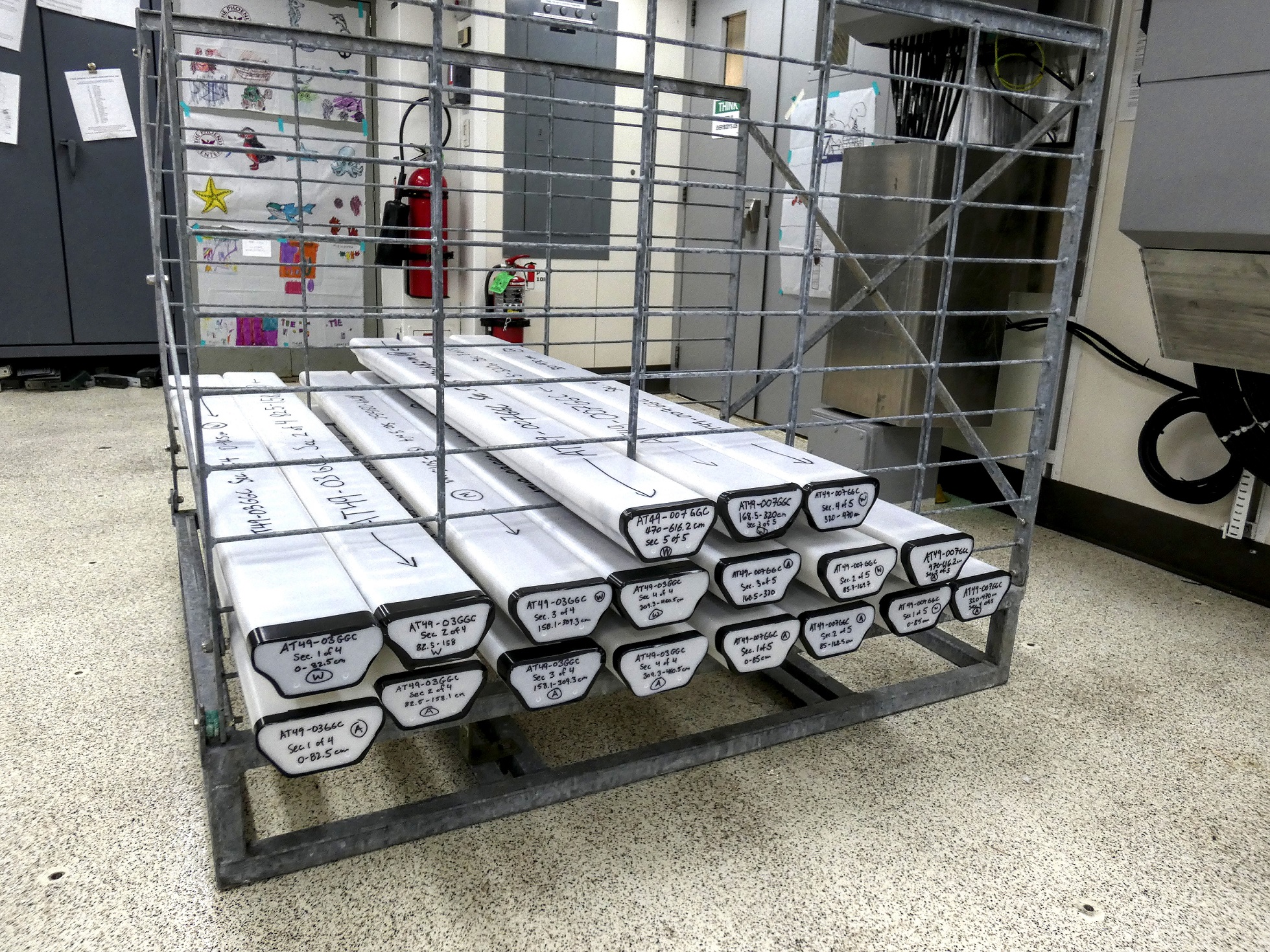
Multicoring
The gravity core notably disturbs the top layers of sediment upon impact with the seafloor. Multicoring provides a means of obtaining a core of the surface layers of sediment that keeps the sediment-water interface intact. Data from the multicore can subsequently be combined with that from the gravity core to yield an undisturbed stratigraphic record.
A multicore consists of a center collection of core tubes (called a “spyder”) surrounded by a cone-shaped aluminum frame. The assembly is lowered with a crane until the frame rests of the seafloor. The spyder continues to fall by gravity inside the frame to collect surface sediment within its tubes.
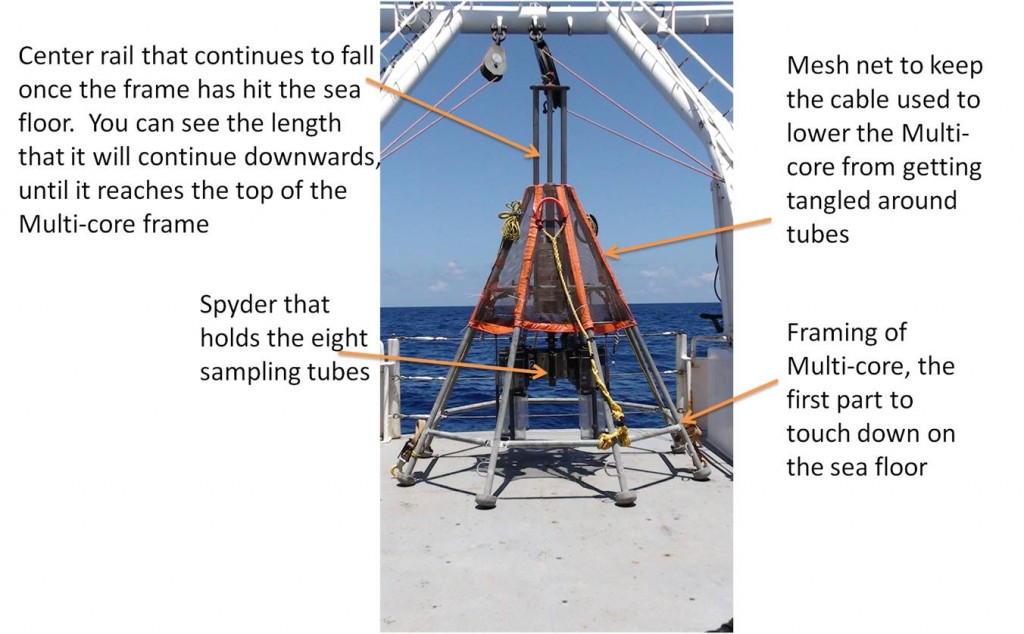
Multicore Analysis
Multicore sample tubes are processed using an “extruder”, which allows for the precise sectioning of the core. Each sample tube is lowered centimeter by centimeter onto the extruder, and 1 cm (in depth) slices of core are sequentially removed and stored in tubes and/or plastic bags for later analysis (alkenones, foram Mg/Ca, etc.). Samples from the uppermost sections of each core were also taken for subsequent analysis for microplastics. Here are some videos of multicore sample tube extrusion:
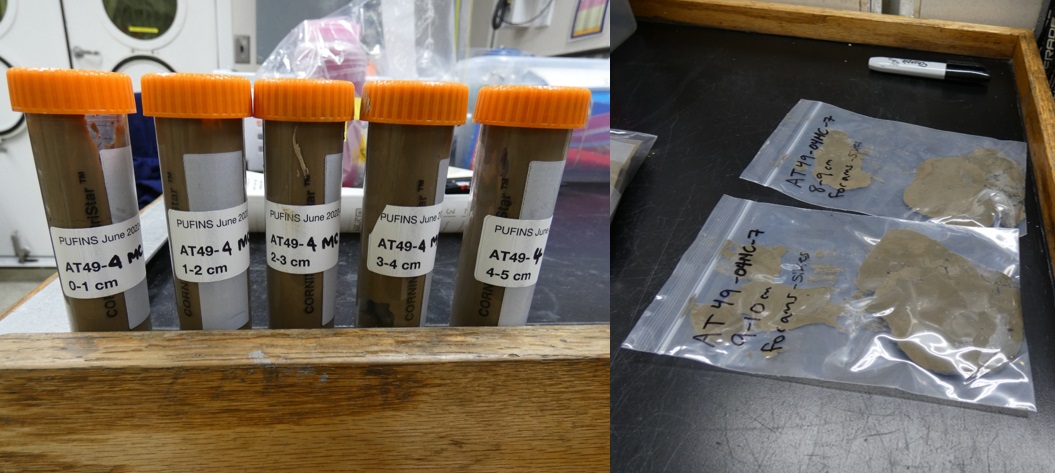
Did You Know?
Long-finned Pilot Whales (Globicephala melas) are very social creatures, typically seen in large groups. Multiple studies have suggested that these whales also form long-term social networks (1). We saw this firsthand yesterday, as a sizeable group of whales developed interest in a Zodiac during a test of the ship’s rescue boats. Here’s a video with footage both from the ship and from the Zodiac (courtesy of Ethan Logan):
Wildlife Sightings
- Herring Gull
- Northern Fulmar
- Great Shearwater
- Long-finned Pilot Whale
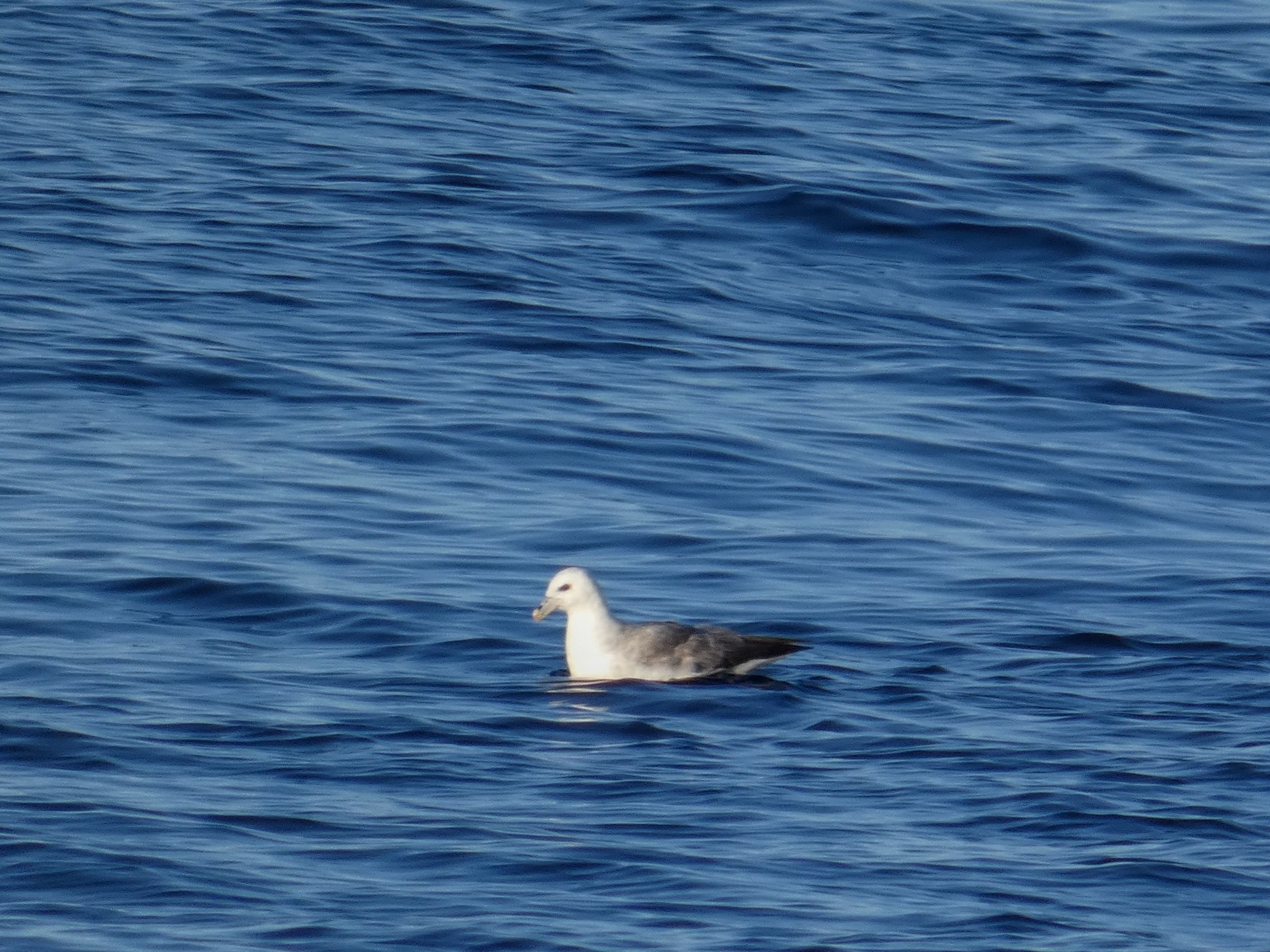
Sources
Ottensmeyer, C Andrea, and Hal Whitehead. “Behavioural Evidence for Social Units in Long-Finned Pilot Whales.” Canadian Journal of Zoology, vol. 81, no. 8, 1 Aug. 2003, pp. 1327–1338, 10.1139/z03-127.
